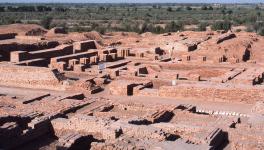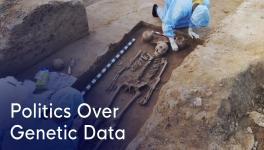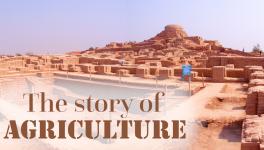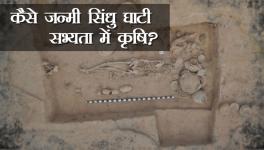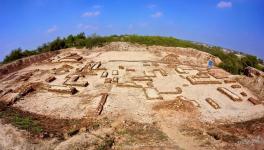No Genetic Clue of Big Ancient-Indian Migration to West: Tony Joseph
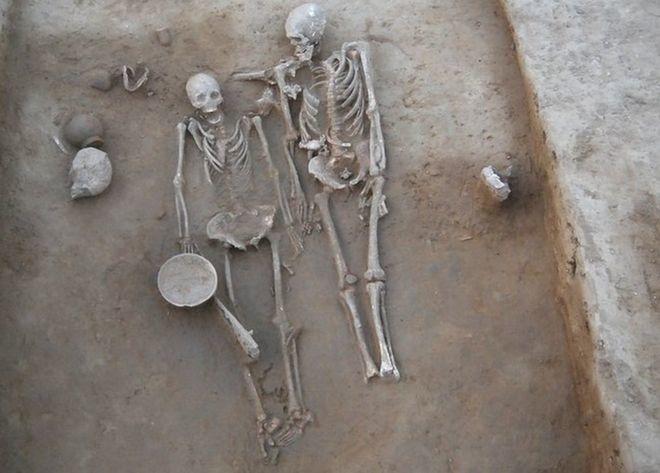
On 5 September, a much-awaited scientific paper— analysing the first genome sequence from a Harappan female individual from the Rakhigarhi archaeological site—was published in the journal, Cell. At a press conference to announce their findings the two Indian co-authors contradicted some findings in their own paper.
For instance, their definitive claims of an ‘Out of India’ migration in pre-history are not stated as unambiguously or specifically in the paper. They also took a position that the ‘Aryan’ migration that veered to the Hindu Right’s position, which historians on India have consistently challenged.
Another related genetics study was published in the journal Science, also on 5 September. Its authors have made no such contradictory claims.
Tony Joseph, who wrote Early Indians: The Story of Our Ancestors and Where We Came From, has examined in his book how migrations, including the Indo-Aryan migration of roughly 4,000 years ago, shaped India’s demography. He likens India’s population to “pizza”—meaning that it is delightfully diverse.
In an email interview, Joseph addresses the claims of the two authors of the study published in Cell. He find media reports on the Indus Valley Civilisation are often inaccurate and unquestioningly indulgent of partisan and myth-making views of history.
To be very clear, and as Joseph has recently pointed out, “the Rakhigarhi DNA study confirms the earlier understanding that the Harappan Civilization was built by a mixed population of First Indians and West Asians, and that the Steppe pastoralists who brought Indo-Aryan languages to India were not present in the region then.”
And the report in Cell itself notes: “...a natural route for Indo-European languages to have spread into South Asia is from Eastern Europe via Central Asia in the first half of the 2nd millennium BCE, a chain of transmission that did occur as has been documented in detail with ancient DNA. The fact that the Steppe pastoralist ancestry in South Asia matches that in Bronze Age Eastern Europe (but not Western Europe) provides additional evidence for this theory, as it elegantly explains the shared distinctive features of Balto-Slavic and Indo-Iranian language...”
Two scientists who have co-authored the study published in Cell claim they are “100% sure” an ‘Out of India’ migration took place. This seems very different from what we know so far about migration patterns in South Asia.
That depends on what one means by ‘Out of India’ migration. If you are talking about some Harappans travelling to neighbouring civilisations such as Bactria Margiana Archaeological Complex (BMAC) or Shehr-i-Sokhta with whom they had trade and cultural links, that is accurate. We have known for a long time that there have been trade and cultural contacts between Harappans and other neighbouring civilisations.
But if by ‘Out of India’ migration you mean large-scale migration of prehistoric Indians to the west, spreading culture and language all the way up to Iceland in westernmost western Europe, then I am afraid there is not even a suggestion of it in any of the genetic papers published now, or earlier. In fact, both the two recent studies, in Cell and Science, emphasise the fact that migrations from Central Asia first into Europe and later into India are what spread Indo-European languages. The two studies, in essence, argue that these migrations explain why Indo-European languages are spread all across Eurasia as they are.
“Multiple lines of evidence suggest that the genetic similarity of I6113 [the Rakhigarhi individual] to the Indus Periphery Cline individuals [11 genetic outliers from sites in Iran and Turkmenistan] is due to gene flow from South Asia rather than in the reverse direction.” Does this mean ‘Out of India’?
This does mean ‘Out of India’ in the sense of a few Harappans travelling to neighbouring civilisations with whom we know that they had trade and cultural contacts. There is no surprise in it and it has no larger implication.
In that case, what do we really learn from the report published in Cell? Is there anything significantly new in the Science report as well? Or are both just confirmations of existing archaeological and genetic evidence?
Mostly [they are] confirmations. The only new things are: the Science report talks about the likelihood that the Harappans spoke a Dravidian language, which the earlier version of the report had not talked about. This is significant and needs to be highlighted. The second is that the West Asians who mixed with the First Indians may have arrived not as farmers, but as hunter-gatherers. In that sense, farming may have begun in India independently, as my book also strongly suggests.
Apart from these two, and the fact that we now have 11 Ancient DNA samples [genetic material] of migrants to Shahr-i-Sokhta and Gonur, instead of three as earlier, I cannot find many other changes. Mostly, the new findings confirm earlier findings with greater, more robust evidence.
[Gonur is an early Bronze Age archaeological settlement, in present day Turkmenistan.]
Could you elaborate why the language aspect is important?
The language aspect is important because it highlights the fact, again, that the Harappan civilisation is the common heritage of all Indians. As genetics has also shown, the Harappans are the ancestors of both North Indians and South Indians...
So it seems that the report-writers veer very far from their paper during the press conference, when they make claims about Vedic India, Aryan migration and so on?
That may be true, but this is not the first time this has happened. In my piece published in The Hindu in 2017, I explain how this was done in an exactly similar manner with an important study of 2009. The report said one thing but a prominent newspaper carried what they said was an interview with a co-author that directly contradicted what the report itself said! There have been other such instances too.
The lesson that media and others need to take from this is that reporting on science needs to be based substantially on the published studies themselves, not the interpretation of the studies by others or even a few of the co-authors after the study has been published in a peer-reviewed journal.
The published, peer-reviewed study has a kind of durability and robustness that remarks at press conferences do not have.
[Joseph is referring to this report published on 17 July 2017, which detailed how a 2009 study that for the first time said north Indians were far more closely related to west Eurasians than South Indians, was twisted and misrepresented in a media report that the newspaper said was based on interviews).
The authors of the Cell paper say that the Rakhigarhi female was their only genetic material for the study and her DNA matched the 11 Cline individuals. Second, that in Shahr-i-Sokhta, the three individuals who were analysed have material culture links to Harappa. Does any of this point to movement ‘Out of South Asia’?
This [matching with the 11 individuals] is what is meant by cultural contact. The earlier study also treated them as migrants between civilisations because of trade and other links. Both Shahr-i-Sokhta and Rakhigarhi individuals of Harappan origin have broadly the same mixture: West Asians and First Indians.
The Science journal study lays out the evidence for mass migrations from Central Asian Steppes into Europe, and into South Asia—such a large area of entire Eurasia—based on hundreds of ancient DNA samples over the entire region.
On that basis, they lay out the case for Steppe migrations that spread Indo-European languages across the entire region. To point to a handful of migrants to a neighbouring civilisation that the Harappans were in close contact with and to suggest that this indicates an ‘Out of India’ migration that spread Indo-European languages from Iceland to Assam would be in direct contradiction with what the research papers themselves say. We should go by what the research papers themselves say.
Can a report about a 10,000-12,000-year-old ancestry claim discover that there was no ‘Aryan’ migration—because the Indus Valley Civilisation ended and only after that did the ‘Aryans’ come to this part of the world. Would that be right to say?
Yes, very much so. The fact that there is no Steppe ancestry in Rakhigarhi or the other aDNA of Harappan migrants, shows clearly that the Aryans were not present in the Harappan civilisation. Today, Indians do carry Steppe ancestry—which shows that it arrived after the civilisation disappeared. Clear conclusion. So, in that sense the Rakhigarhi DNA does tell us that ‘Aryans’ came later.
How does this matter? Why make tall claims about our pre-history? Is it part of a political project?
The Right-wing wants to privilege the Arya-Sanskrit-Vedic culture as the foundational source of Indian civilisation and everything else is to be seen as subservient. It is uncomfortable with the idea that the Harappan civilisation, the largest civilisation of its time by far, precedes the Arya and that we are a multi-source civilisation. It bristles at the concept of “unity in diversity”. The one leader, one nation, one culture, one religion, one election... attitude goes well with the idea of one ‘supreme’ culture with a singular foundational source. There is also the issue of not liking the idea of Ary being migrants, since that would mean you cannot stigmatise Muslims for being migrants—it is another matter that almost all Muslims in India are not migrants.
So, basically South Asia is a mix of different kinds of people, races, regions, cultures and no matter what spin is given, this has not changed?
It has not. To be specific, South Asian populations are a mix of mostly four major mass prehistoric migrations: ‘Out of Africa’, West Asian, East Asian and Central Asian Steppe (also known as Aryan). And a very important point to keep in mind is that there is nothing special about this. All large population groups in the world—the Europeans, the Americans, the Central Asians, the East Asians—are all the result of multiple mass migrations that happened in prehistory. In that sense, like other large population groups, we are all migrants, and we are all mixed. We have created a unique civilisation out of many different streams of heredities and ancestries and migrations that have flown into this country over thousands and tens of thousands of years. Unity in diversity is not a cliché; it is an accurate description of us.
Get the latest reports & analysis with people's perspective on Protests, movements & deep analytical videos, discussions of the current affairs in your Telegram app. Subscribe to NewsClick's Telegram channel & get Real-Time updates on stories, as they get published on our website.









